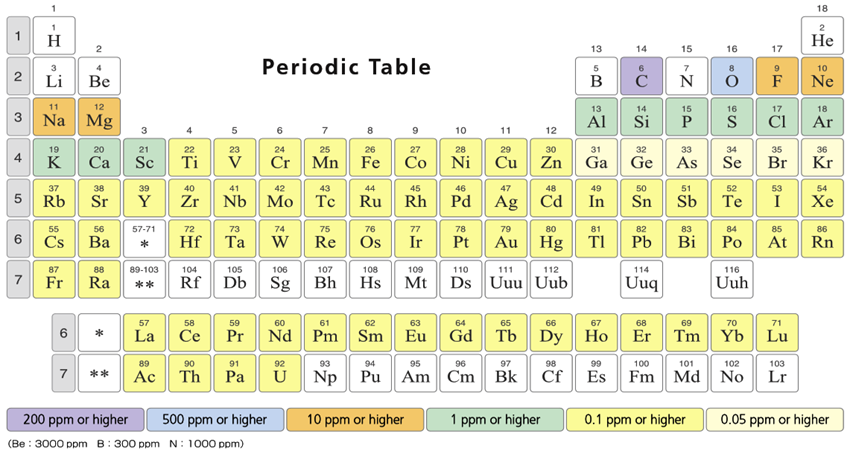- Earth, Atmosphere and Environment
- Research
- Laboratories
- Micro-Compositional Analysis Laboratory
- X-ray Fluorescence
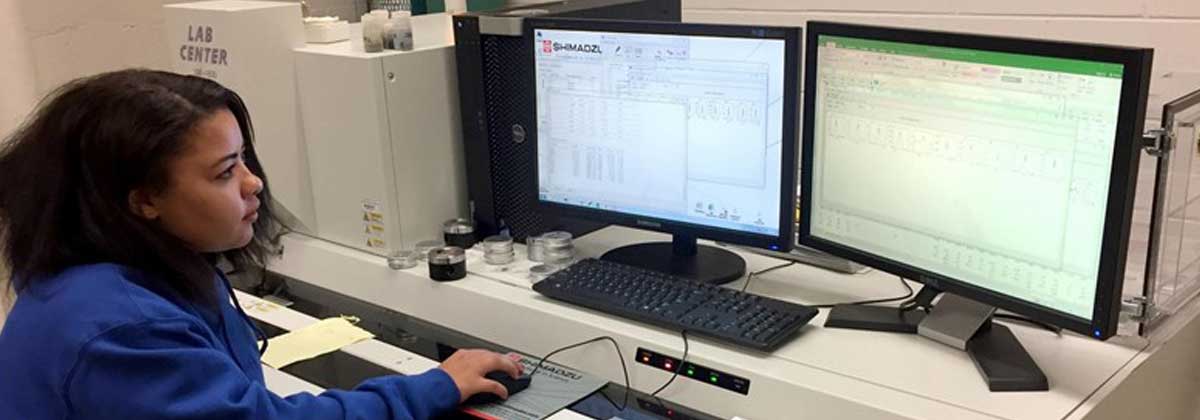
X-ray Fluorescence (XRF) Shimadzu XRF-1800
Description
XRF uses an x-ray source to excite a sample and measure the secondary x-rays emitted to determine and measure the elements present. It can give elemental concentrations in solids, powders, films, and liquids.
Below are the general sample requirements, if your sample doesn’t meet these requirements, please contact us.
- Solids: Measured surface needs to be reasonably flat, fit within a 50 mm in diameter circle and less than 20 mm in depth. Analysis can be over the entire area, localized spots or mapped down to 0.5 mm resolution.
- Powders: 1 g of material is ideal, but if there is less, a filler can be added as long as this does not dilute your element of interest below detectable limits. To get the best measurements, powders are normally pressed into a pellet.
- Liquids: 40 ml is required, but can be diluted like the powder.
- Films: If you know the composition of a layered sample, the thickness can be determined or if you know the thickness, the composition can be determined. The combined layers need to be thin enough for x-rays to penetrate them, and this varies with material composition.
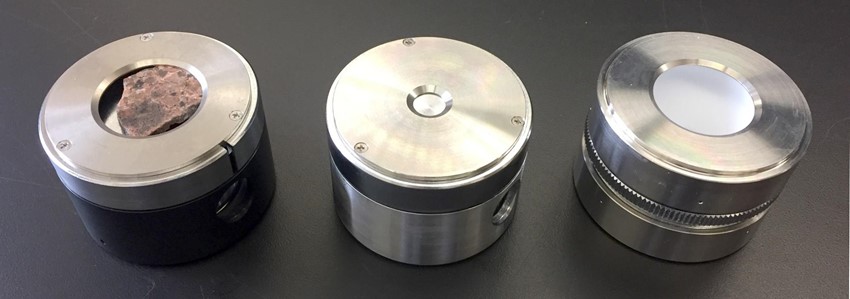
There are three general types of measurement and analysis of samples. Accuracy of results and analysis time increases as you go down the list.
- Standardless: Uses XRF internal fundamental parameters to calculate the abundance of elements
- Standard Reference: A standard with known values close in physical properties, and elemental composition and abundance to the unknown sample is measured and compared to quantify the unknown.
- Calibration Curve: A series of standards that bracket the unknown sample is measured and compared to quantify the unknown.
Examples of Data
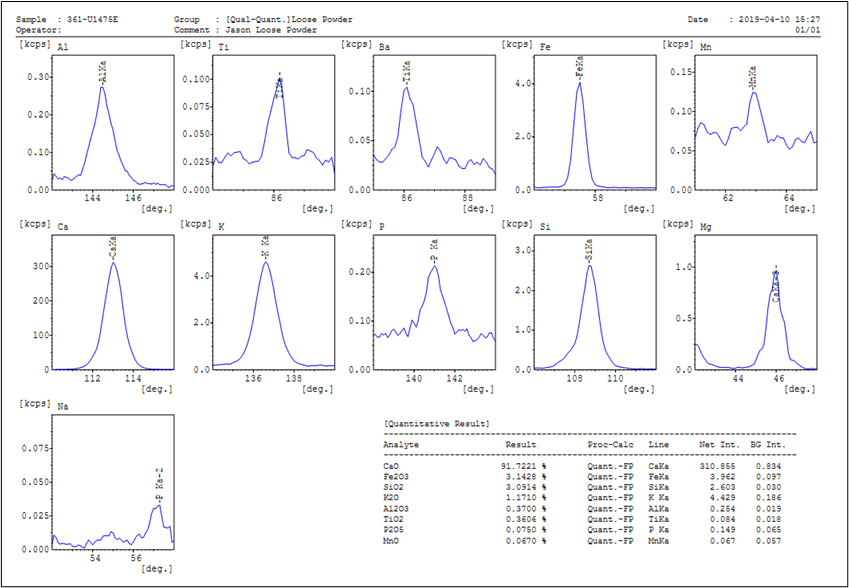
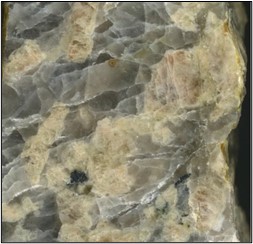
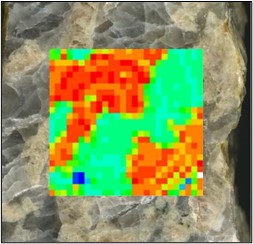
Example of Mapping: Silicon in a sample of granite at 500 μm resolution.
Chart of detectable limits
Contact and Pricing
| Sample Material | Measurement Type | NIU | External Academic | Commercial |
|---|---|---|---|---|
|
Powder, Liquid, Film, Solid |
Bulk |
$40** |
$50** |
$80** |
|
Solid |
Points / Mapping |
Contact Us |
Contact Us |
Contact Us |
|
Technician Time |
N/A | N/A |
$300 |
|
*Academics that wish to be trained and run their own samples may be charged a reduced rate.
**If using a reference material or calibration curve for these samples, some technician time will be involved to design, test and implement the appropriate procedure. The time needed to conduct that design, testing and implementation procedure will depend on your samples and elements of interest. Samples with more than 10 elements to be measured will be charged at different rates. Contact us with sample information for an estimate.
Contact Josh Schwartz at joshua.schwartz@niu.edu if you have any questions.
Contact Us
Micro-Compositional Analysis LaboratoryJoshua Schwartz
Laboratory Manager
joshua.schwartz@niu.edu
815-753-7930
